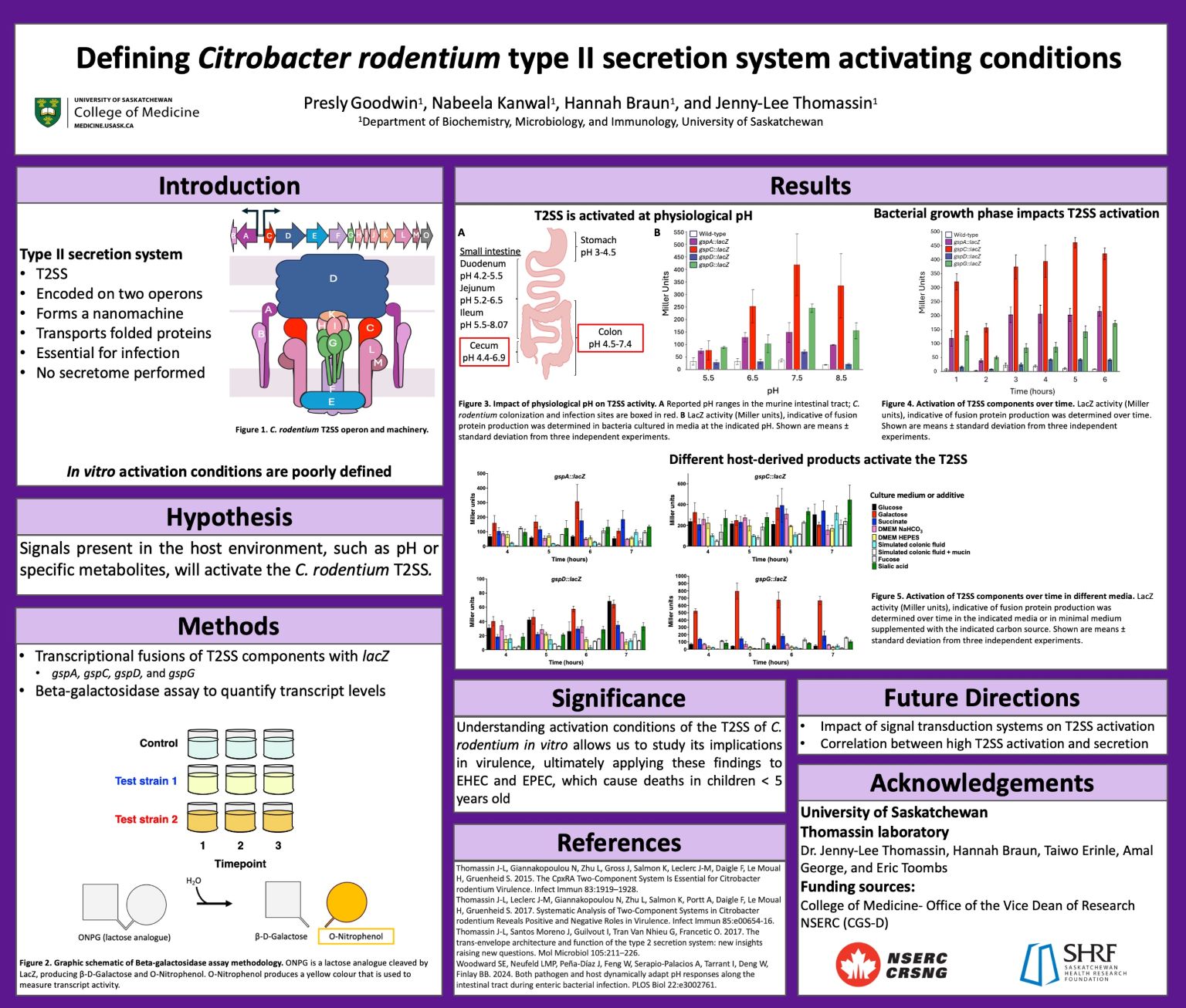
Defining Citrobacter rodentium type II secretion system activating conditions
Presly Goodwin
Citrobacter rodentium is a natural murine infection that is used as a surrogate animal model for enteropathogenic and enterohemorrhagic Escherichia coli (EPEC and EHEC) due to their shared core virulence factors. One shared virulence factor C. rodentium has with EPEC and EHEC is the type II secretion system (T2SS), which is used by bacteria to secrete proteins, including toxins, to cause infections. The T2SS in C. rodentium has been shown to be required for host infection, but in vitro activation conditions and secreted proteins remain unknown. This project aims to use chromosomal translational fusions of lacZ fused to components of the T2SS to monitor the activation of key T2SS genes gspA, gspC, gspD, and gspG to monitor T2SS activation. This study shows that the T2SS is growth phase responsive with the highest activity in late exponential and early stationary growth phases. In addition, my results also suggest that the T2SS responds to host signals encountered in the murine intestinal tract during infection. Further work will investigate if high T2SS levels correlate with active protein secretion.
